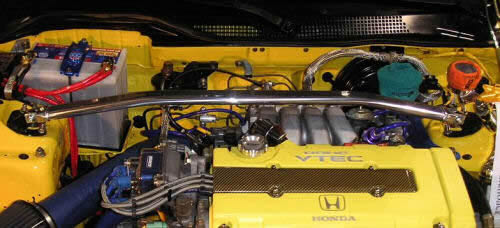Strut Tower Brace or Strut Bar
The best kinds of performance modifications are those that are simple and inexpensive. While it's easy to get lost on the costly way to squeezing more horsepower out of an engine, another and often more effective route to take is to try to improve handling and put existing horsepower to better use. Horsepower that goes up in smoke or causes uncontrollable handling while driving in anything other than a straight line is all show and nothing else.
If you have swapped out your stock springs for sport springs with a more aggressive rate that keeps your car from diving too much under braking, creating an overall stiffer ride. You might have also matched them with heavy-duty shock absorbers which help to keep the car feeling tight over elevation changes and through rapid direction changes. Even with these kinds of mods, you might still be frustrated with the amount of body roll you feel on the track or even on the street.
What other options are left for you to explore?
One of the easiest ways to tighten up vehicle suspension performance and handling is with a strut brace bar.
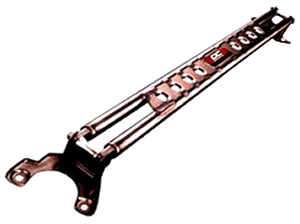
One of the best decisions you can make would be to install front and rear strut brace. What is a strut brace? Simply put, a strut brace is a simple metal bar (or carbon fiber, if you are into that exotic, ultra-expensive range of parts) bolted to the top of two opposing strut towers, which is used to horizontally brace the frame of the car.

The strut tower is the mounting point for the top of the shock absorber, and it is directly connected to the vehicles chassis. By using the brace to attach the left and right strut towers together, you are adding on to the frame rigidity except you are doing it from the top, instead of the bottom as you would with a sway bar.
A strut bar, strut brace, or strut tower brace (STB) is a mostly aftermarket car suspension accessory usually used in conjunction with MacPherson struts on monocoque or unibody chassis to provide extra stiffness between the strut towers.
The MacPherson style strut suspension is pretty much standard issue on most modern cars-especially those of the economical or compact variety.
The struts themselves are the key to the simplicity of the MacPherson system. With a MacPherson strut suspension where the spring and shock absorber are combined in the one suspension unit, the entire vertical suspension load is transmitted to the top of the vehicle's strut tower, unlike a double wishbone suspension where the spring and shock absorber may share the load separately.
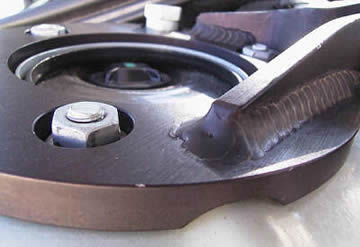
The towers are part of the body structure of the car. The bottom side of the strut towers bolts up to a ball joint and lower control arm, which is also bolted up to the body of the car. The bad side of it is that the body of the car acts as a chassis. Since the suspension is connected directly to the body, a certain amount of body flex is to be expected. A car's strut towers normally flex during hard cornering or when hitting a bump, some say up to a 10 to 15 millimeters. This flexing can cause traction loss as well as some rattles and change steering geometry as the body flexes.
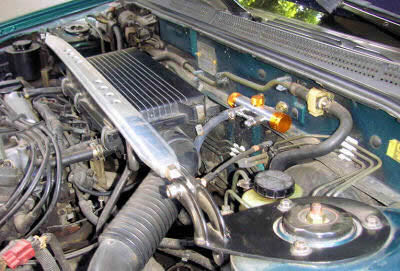
Think of the strut tower bar like taping up a cardboard box. The box is flexible before the top is closed and taped. Once the sides and top of the box get taped together, the box structure becomes rigid and strong. The strut tower brace boxes up the upper part of the MacPherson strut suspension, and forms a full circle of bracing to help prevent unwanted suspension flex.
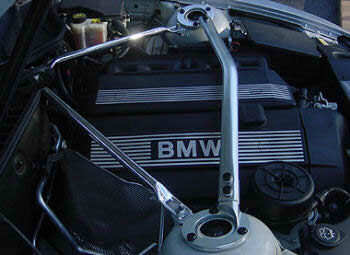
Installation is rather straight forward.
The strut tower at the front of the car is found in your engine bay. First remove the nuts from the top of the strut, then place the bracket over the studs, re-install the nuts and tighten. Do the same with the other side, then adjust the bolts in the bar to the length required, tighten the lock nuts and install the bar. There should not be any tension or compression on the bar at car rest. The purpose of a strut brace is to only hold the strut towers where they are, not pull them in or push them out. You have to make sure that any strut tower brace you are considering to buy has enough clearance to make it over the top of your engine valve cover. Oh, and keep in mind that once you are done admiring your installation work, you will need to be able to close the hood as well so it cannot be too tall either.
 The rear strut tower is a little trickier. On some cars, it can be found in the trunk or cargo area if you have a hatchback. However, many sedans have the strut towers hidden under the rear deck or seat, meaning that the seat has to come out before they can be accessed. This extra step can be a pain if space in your car is tight. The rear brace is installed in the exact same way as front one. Removal and re-installation of the nuts can be a little fiddly without removing the entire trim, but can be done with a little patience.
The rear strut tower is a little trickier. On some cars, it can be found in the trunk or cargo area if you have a hatchback. However, many sedans have the strut towers hidden under the rear deck or seat, meaning that the seat has to come out before they can be accessed. This extra step can be a pain if space in your car is tight. The rear brace is installed in the exact same way as front one. Removal and re-installation of the nuts can be a little fiddly without removing the entire trim, but can be done with a little patience.
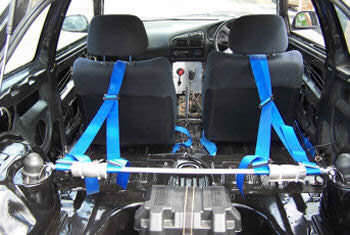 One thing is certain about strut tower braces: once you have one in your car, you will wonder how you ever got along without one. The car has much more solid feel to it. With the tightened chassis, you will feel like your car is on rails and corners that used to have your passengers holding onto the door handle will feel a lot calmer and more controlled, which is exactly how your car should feel.
One thing is certain about strut tower braces: once you have one in your car, you will wonder how you ever got along without one. The car has much more solid feel to it. With the tightened chassis, you will feel like your car is on rails and corners that used to have your passengers holding onto the door handle will feel a lot calmer and more controlled, which is exactly how your car should feel.
The reason every car doesn't come with a strut tower brace is that most economy cars are built with economy in mind. Most people don't pick up economy cars with performance in mind. For the few who like to push their cars to limits on a racetrack, or enjoy spirited driving on open roads, a strut tower bar is an easy modification that can bring noticeable improvement in handling.
Performance cars like the Mitsubishi Lancer Evolution come from the factory with a strut tower bar, but if not, chances are good a strut tower brace is available from your local aftermarket shop.
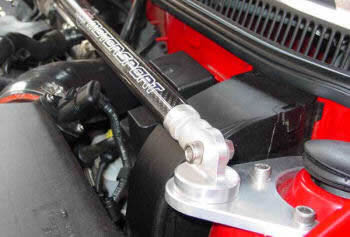
High performance and very expensive strut brace are made of carbon fiber composites. It has the extreme rigidity to minimize front-end flex during the hardest cornering, which keeps your tires squarely on the road and delivers the traction when you need it most. At the same time it's exceptionally light, due to its hollow profile. The entire piece weighs only 0,5 kilograms.
When asked about suspension modifications, Larry Nissen (a BMW Tech) said. "I would start with a good strut brace, it will help the handling a now, but where you will get your money back is three years down the road when your car is still as tight as it is now."
